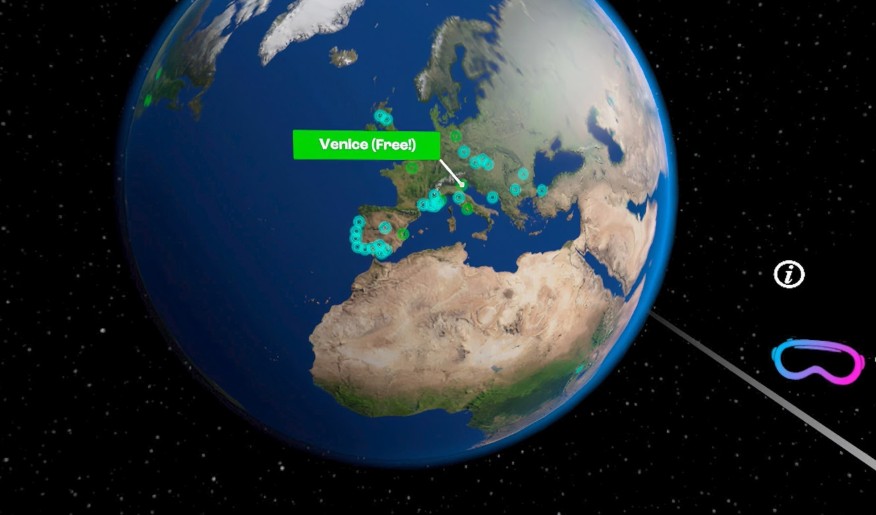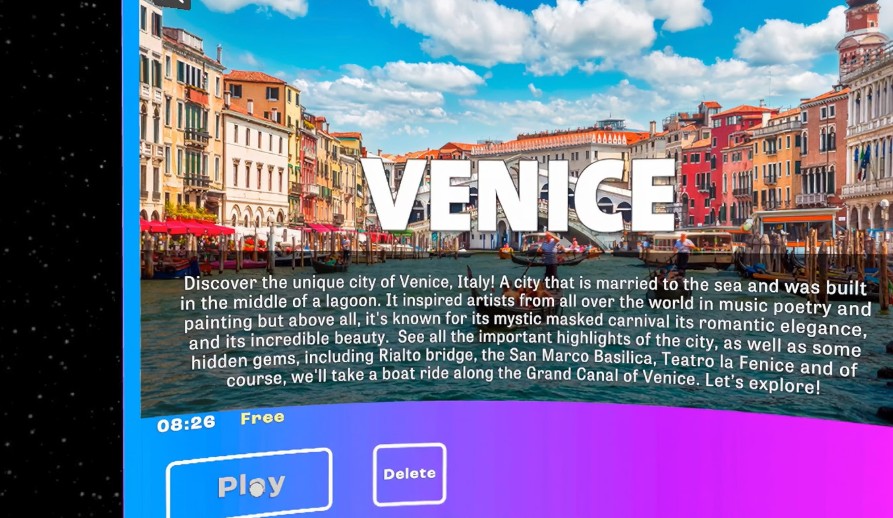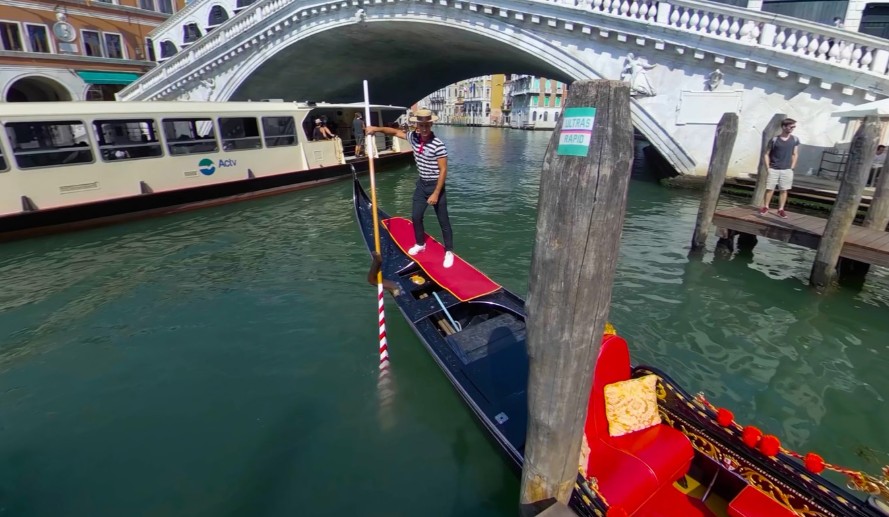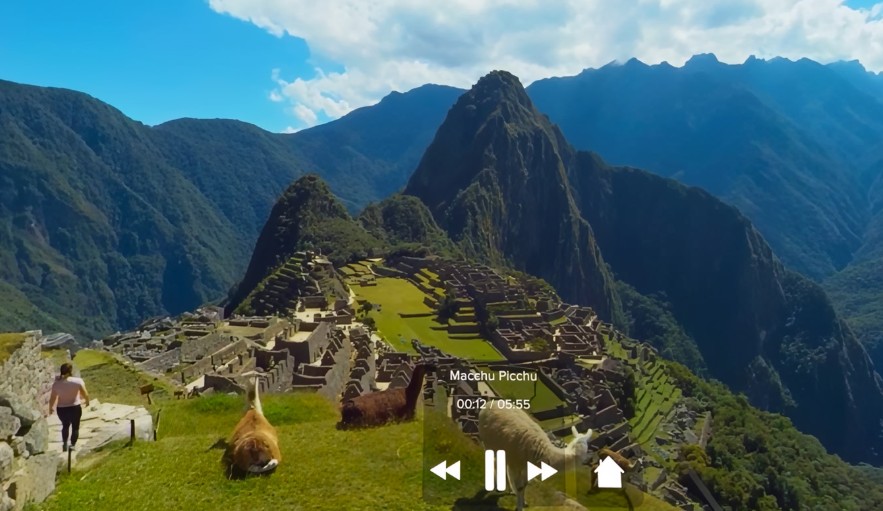Virtual reality has evolved beyond gaming into a powerful tool for global discovery. TriptoVR on Meta Quest lets you traverse continents without a passport-experiencing Tokyo’s neon-lit streets or the Serengeti’s vast plains in photorealistic detail. This shift is fueled by Meta’s $1.5 million developer competition, which prioritizes lifestyle apps that leverage hand tracking and mixed reality. Why settle for flat screens when you can step inside the world?

Travel constraints-like cost, time, or physical barriers-often limit real-world adventures. VR dismantles these hurdles. Imagine a teacher in Kansas guiding students through the Colosseum’s ancient corridors or an elderly individual revisiting their childhood neighborhood overseas. TriptoVR isn’t just escapism; it’s a bridge to inaccessible experiences, offering emotional resonance that 2D media can’t match. High-fidelity visuals, inspired by apps like Space Explorers: Ultimate Edition with its 8K cosmos, ensure every texture and shadow feels tangible.
Redefining Exploration Through Virtual Reality
The Meta Quest platform’s hardware advancements make this possible. Unlike early VR, which caused nausea with low resolution, current headsets deliver smooth, immersive environments. Hand tracking allows intuitive interactions-pointing at landmarks or ‘touching’ virtual foliage. But a warning: poorly optimized apps can still trigger discomfort. Always test shorter sessions first. For those wary of motion sickness, stationary experiences like city tours are a safe start.

Consider the broader impact. Virtual travel reduces carbon footprints and preserves fragile sites from overtourism. It’s also a boon for education; studies show spatial learning in VR improves retention by up to 30% compared to textbooks. My friend, a travel blogger sidelined by injury, used TriptoVR to ‘scout’ locations for future trips-proof that it blends practicality with wonder. What if your next vacation began with a headset?
As Meta invests in non-gaming applications, TriptoVR represents a frontier where technology meets human curiosity. It’s not about replacing physical travel but expanding access to it. Whether you’re a curious explorer or someone seeking solace in nature, this app turns your living room into a portal. Ready to see where it takes you?
Unpacking Immersive Mechanics and Real-World Integration
TriptoVR leverages Meta Quest’s hand tracking to transform passive viewing into active discovery. Unlike traditional controllers, your bare hands become tools-pinch to zoom on a map, swipe through timelines, or ‘grab’ virtual artifacts. This mimics real-world interactions, reducing the learning curve. For instance, pointing at the Eiffel Tower might trigger a historical overlay, while a cupping gesture could simulate feeling ocean spray. Meta’s Horizon Start Competition rewards such innovations, pushing developers to integrate hand tracking and mixed reality for deeper immersion. How many apps let you trace the Great Wall’s contours with your fingertips?

Mixed reality (MR) elevates TriptoVR beyond pure virtual environments. By blending digital elements with your physical space, it creates hybrid experiences-like projecting a miniature Taj Mahal onto your coffee table. This isn’t just gimmicky; it anchors the virtual in the familiar, reducing disorientation. Compare this to Space Explorers: Ultimate Edition’s 8K cosmos, which immerses users in entirely alien settings. TriptoVR’s MR approach makes distant locales feel accessible and personal. A warning: ensure your play area is well-lit for accurate tracking, or MR objects may drift unnervingly.
The app’s environmental fidelity hinges on photogrammetry and lidar-scanned data, capturing textures down to cobblestone cracks. While Space Explorers uses 8K for space, TriptoVR applies similar resolution to terrestrial sites, with dynamic lighting that shifts from dawn over Angkor Wat to midnight in New York. This isn’t mere video-it’s a navigable 3D model. Stats from educational VR studies show that such detail boosts spatial memory retention by over 30%, making it ideal for students or history buffs. Ever noticed how shadows fall differently in VR versus reality? TriptoVR’s engine simulates this with startling accuracy.
Multiplayer functionality, another competition priority, lets users explore together. Imagine guiding a friend through Amazon rainforest trails or meeting at virtual cafes to plan real trips. This social layer counters the isolation of solo VR-a common critique. Contrast with intense games like Salmon Man, a punishing platformer focused on solitary challenge; TriptoVR fosters collaboration. Pro tip: use voice chat to narrate discoveries, mimicking a tour guide’s role. But beware latency issues; test your Wi-Fi for smooth同步 experiences.
Accessibility features set TriptoVR apart. For users with mobility issues, teleportation movement eliminates physical strain. Audio descriptions and haptic feedback cater to visual or hearing impairments-feel the rumble of a geyser or hear narrated lore. My aunt, who uses a wheelchair, ‘visited’ Machu Picchu and described the emotional weight of ‘standing’ at its summit. Such stories underscore VR’s role in empathy-building. Did you know that 15% of VR users report using it for therapeutic purposes, like virtual exposure therapy?
Optimization is critical. Poorly rendered scenes can cause nausea, but TriptoVR’s adaptive frame rate adjusts based on your headset’s capabilities. On Quest 3, expect smoother performance than older models. Always enable stationary mode initially; it locks your viewpoint, minimizing vestibular conflict. For frequent travelers, the app’s ‘scout mode’ lets you preview destinations in VR before booking-saving time and money. One user reported cutting trip-planning research by half after using this feature.

Beyond leisure, TriptoVR serves professionals. Architects inspect virtual building sites, while journalists ‘walk’ through conflict zones safely. The Meta competition’s focus on lifestyle apps underscores this shift-VR isn’t just entertainment. With prizes up to $100,000, developers are incentivized to add features like real-time weather simulations or cultural workshops. What if you could attend a virtual Japanese tea ceremony? TriptoVR’s evolving library makes it possible, blending education with visceral experience.
Your Gateway to Global Connection
TriptoVR isn’t just an app-it’s a catalyst for redefining human exploration. Meta’s $1.5 million Horizon Start Competition underscores a pivotal shift: VR is maturing into a lifestyle essential, not a gaming peripheral. With prizes targeting hand tracking and mixed reality integrations, expect TriptoVR to evolve from a passive viewer to an interactive travel companion. Why merely watch the world when you can influence it?
Think beyond tourism. This technology bridges societal gaps-imagine using it for virtual family reunions across continents or corporate teams scouting international offices without jet lag. Unlike solitary VR games like Salmon Man, which emphasize individual struggle, TriptoVR’s multiplayer focus cultivates shared experiences. My neighbor, a teacher, hosted a virtual field trip where students collaboratively solved environmental puzzles in the Amazon-proof that connection fuels engagement.
Actionable next step: Integrate TriptoVR into your routine. Use it to pre-visit destinations before booking flights-saving time and carbon emissions. Enable hand tracking to ‘sketch’ travel routes in mixed reality, overlaying plans onto your living room. Start with short, stationary sessions to acclimatize, then experiment with social features. Beware of overuse; balance virtual journeys with real-world sensory experiences to avoid dissociation.
The future? As seen in Space Explorers’ 8K cosmos, visual fidelity will near photorealism. TriptoVR could soon incorporate live weather data or cultural events-attending a Tokyo festival in real-time VR. This isn’t about replacing physical travel but enhancing its accessibility and intentionality. What if your next ‘trip’ started as a virtual blueprint, refined through repeated visits?
Ultimately, TriptoVR democratizes discovery. It turns barriers into portals-whether you’re mobility-limited, budget-conscious, or simply curious. Embrace it as a tool for empathy, education, and efficient planning. The world awaits-no passport required.

